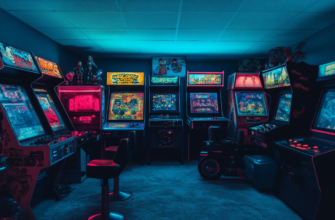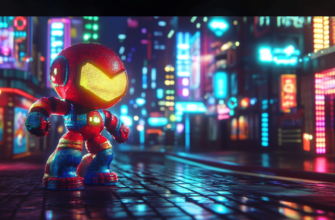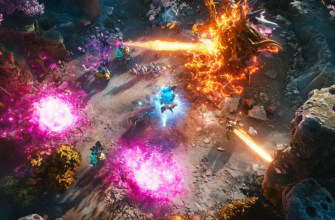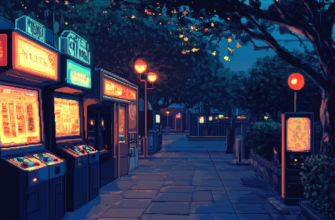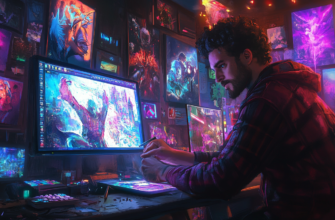- How to create mobile games: a beginner’s guide from concept to release
- What is mobile game development and why should you care?
- Main stages of mobile game development
- Step 1: Concept and planning the game
- What kind of game should you create?
- Step 2: Design the game and prototype
- Game design document (GDD)
- Prototyping
- Step 3: Development – bring your game to life!
- Choose the right game engine
- Assets and animations
- Step 4: Testing – polish till it shines
- User experience testing
- Step 5: Release the game
- App store optimization (ASO)
- Step 6: Post-launch support and updates
- Community engagement
- Practical tips for making your mobile game a hit
- Conclusion: Creating mobile games is a long journey, but totally worth the effort
How to create mobile games: a beginner’s guide from concept to release
Ever wondered how mobile games are made? If you’re a gaming enthusiast like me, you’re probably curious about what happens behind the scenes in mobile game development. From coming up with that killer idea to releasing it on the app stores, there’s a lot that goes into that tiny game you tap away at on your phone. But don’t worry, bro, I’ve got you covered. In this article, I’ll walk you through the entire mobile game creation process, step by step. Whether you’re an aspiring game developer or just want a peek behind the curtain, you’re in the right place.
What is mobile game development and why should you care?
Mobile game development is the process of designing, programming, and releasing games that are specifically tailored for smartphones and tablets. These games can range from simple puzzles to massively multiplayer online games (MMOs).
The mobile gaming industry is booming. In 2023, it’s expected to generate over $200 billion in revenue worldwide. Pretty wild, right? That’s why more developers, indie studios, and even large gaming companies are jumping on the mobile gaming train. If you want to go where the action (and money) is, learning how mobile games are made is the first step.
Main stages of mobile game development
Now, let’s break down the main stages of game development. Each phase is important, and skipping or rushing one of them can lead to problems (hello, buggy apps!). Here’s what you can expect:
- Concept and planning
- Design and prototyping
- Development
- Testing
- Launch
- Post-launch support
Let’s dive into each step one by one, so you can see exactly what’s involved.
Step 1: Concept and planning the game
You can’t have a game without a solid idea. This is where the creative part comes in. Before you launch into coding or designing characters, I suggest spending some quality time brainstorming the core concept. You want your game idea to be unique but not overly complicated. You’ve got to find that sweet spot!
What kind of game should you create?
Here’s where you open up your imagination! But, let’s be real—you also need to think about what genres are hot right now in the mobile market. Popular genres tend to include:
- Casual games: Think puzzles, endless runners, and simple arcade games like Flappy Bird and Candy Crush.
- Role-playing games (RPGs): These often focus on character development and storylines, such as games like Genshin Impact or Pokémon.
- Strategy games: Clash of Clans-style gameplay, where players need to plan and strategize to succeed.
- Simulator games: From farming simulators to life simulators, these tend to be pretty popular.
Once you’ve got an idea, it’s time to ask yourself a few critical questions:
Who is the target audience? – Are you focusing on casual gamers, hardcore players, or something in-between?
What’s your monetization strategy? – How are you planning to make money? Ads? In-app purchases?
What platform will you use? – Are you developing for Android, iOS, or both?
Step 2: Design the game and prototype
Alright! You’ve got the idea, now it’s time to design how the game will both look and feel. In game development, this step is more than just picking colors and cool visuals—although that’s fun too!
Game design document (GDD)
Before you jump into wireframes or playtesting, you’ll want to create a Game Design Document (GDD). This is basically your blueprint. It will outline:
- The key mechanics of the game
- The visual style and art direction
- The gameplay loop: What are the players going to do repeatedly?
- The characters, maps, and overall story (if it’s a storyline-based game)
This is where you put down everything about the user experience (UX) and how you want players to interact with your masterpiece. Think of it as your gaming Bible!
Prototyping
A prototype helps you test the core mechanics before committing to full-blown development. You don’t need perfectly polished graphics yet, just focus on getting the game mechanics to work. Tools like Unity or Unreal Engine offer prototyping features that can help you start small.
Step 3: Development – bring your game to life!
This is where the rubber meets the road, and the coding begins. You’ll work with game engines, scripts, and assets to turn your prototype into a fully-fledged game.
Choose the right game engine
There are several game engines you can use for mobile development:
- Unity: Widely used and beginner-friendly, Unity supports both 2D and 3D games.
- Unreal Engine: Known for its high-quality 3D rendering capabilities. It’s a bit more advanced but provides more freedom in complex projects.
- Godot: A free, open-source engine that’s also gaining popularity among indie devs.
Pick the platform that feels right to you, and start scripting your game mechanics.
Assets and animations
This is where your game’s visual identity comes to life. You’ll need to create or purchase assets such as:
- 2D sprites or 3D models
- Animations for characters and objects
- Backgrounds and environments
- SFX and music
If you’re not an artist, no shame in buying ready-made assets from marketplaces like Unity Asset Store or TurboSquid.
Step 4: Testing – polish till it shines
Just when you think you’re done, you find a bug that makes your character walk through walls! Don’t panic, this is why testing exists. Testing helps you identify and iron out any issues before release.
In mobile game development, there are usually three types of testing:
- Alpha testing: Your internal team tests the game to catch obvious bugs.
- Beta testing: Release a beta version to a select group of users to get external feedback.
- Full testing: Before launching, make sure the game works well on both Android and iOS platforms (if applicable).
User experience testing
After technical testing, don’t forget about UX! Playtesting will show you if players actually enjoy the game or if certain areas need more polish or rebalancing.
Step 5: Release the game
You’re almost there! Once you’re confident that your game is polished and bug-free, it’s time for the big debut. Here’s what you need to do when you’re gearing up for release:
- Prepare marketing materials: Screenshots, trailers, and promotional content.
- Choose a distribution platform: Most developers aim for the Apple App Store and Google Play Store.
- Set up monetization: Ensure that in-app purchases or ads are functioning properly.
App store optimization (ASO)
Just like how we use SEO for blogs, game developers use ASO to help their games rank higher in the app stores. Optimize your app title, description, and keywords based on popular search terms.
Step 6: Post-launch support and updates
Your job isn’t done after the game’s live. In fact, the real journey might just begin. Players will probably want updates, new levels, bug fixes, or seasonal events. Responding to this is key to maintaining a long-term fanbase.
Community engagement
Build a community around your game. Engage with players through social media, Discord, or Reddit. Take feedback seriously and use it to improve your game with patches or content updates.
Practical tips for making your mobile game a hit
- Keep it simple: You don’t need a complicated game mechanic for users to enjoy it. Sometimes the most addictive games are the simplest ones (e.g., Temple Run, Crossy Road).
- Optimize for mobile: Remember that your game will run on relatively weaker hardware than PCs or consoles. Make sure it’s optimized for different smartphones and tablets.
- Test on different devices: Not everyone will have the latest iPhone 13. Try your game on older models to ensure it runs smoothly.
- Update regularly: By releasing regular updates, you can keep your audience engaged and excited about new content.
Conclusion: Creating mobile games is a long journey, but totally worth the effort
And there you have it—the entire process of creating a mobile game from concept to release! With a little creativity, patience, and plenty of playtesting, you can bring your game idea to life. Sure, it’s a learning curve, but the payoff can be huge, both in terms of creative satisfaction and potentially financial success.
If this guide makes you want to dive deeper, awesome! Start by fleshing out a concept and prototyping. Before you know it, you could be launching your very own game that people worldwide will enjoy. Now, get out there and start developing, bro!



